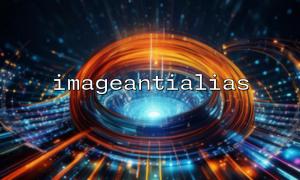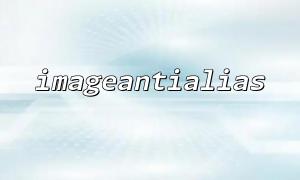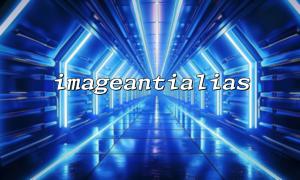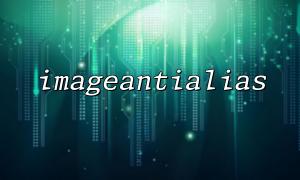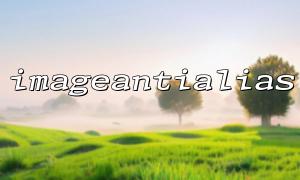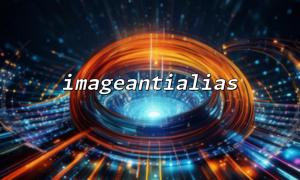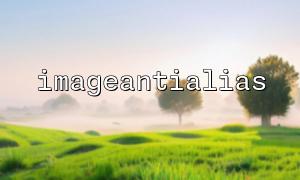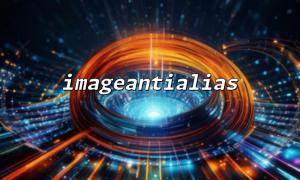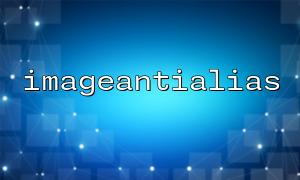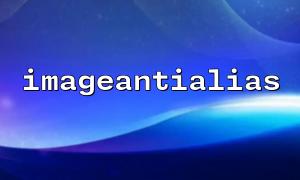When using PHP for image processing, the imageantialias() function is often used to enable image anti-aliasing to improve the smoothness of drawing lines. However, developers will find significant differences in performance of this function in different operating systems, especially Windows and Linux. This article will explore the causes of this phenomenon and the mechanism behind it.
imageantialias() is a function in the PHP GD library, and its main function is to enable or disable anti-aliasing when drawing graphics. Its usage is very simple:
<?php
$image = imagecreatetruecolor(200, 100);
imageantialias($image, true);
imageline($image, 0, 0, 199, 99, imagecolorallocate($image, 0, 0, 0));
header('Content-Type: image/png');
imagepng($image);
imagedestroy($image);
?>
The above code turns on anti-aliasing and draws a slash, which in theory should be smoother.
PHP's image processing capabilities rely on the GD library, and the implementation details and versions of the GD library may vary on different platforms:
Windows environment : Usually PHP comes with Windows-specific compiled version GD library, which may integrate better support for anti-aliasing, and the underlying graphical interface is better combined with the system graphics driver.
Linux environment : The GD libraries under Linux often rely on libgd installed on the system. Different distributions and versions may vary greatly. Some versions of the GD libraries have incomplete anti-aliasing support or incomplete implementation, resulting in less obvious anti-aliasing effect.
The effect of anti-aliasing depends not only on the GD library itself, but also on the underlying font rendering and graphics engine:
Windows system has a relatively complete GDI (graphics device interface) support, and anti-aliasing rendering is smooth.
Linux systems have diverse graphics environments (such as X11 and Wayland), and different environments support different graphics rendering, which may lead to poor anti-aliasing.
The integration method and parameter configuration of PHP for GD libraries during compilation will also affect the anti-aliasing function:
The official PHP version under Windows usually has more complete GD support built-in.
Common PHP versions in Linux environments may rely on system libraries and certain optimizations are not enabled at compile time, resulting in differences in functional performance.
Suppose we require all URL domain names to be replaced with m66.net when drawing an image with links. You can refer to the following example:
<?php
$image = imagecreatetruecolor(300, 100);
$white = imagecolorallocate($image, 255, 255, 255);
$black = imagecolorallocate($image, 0, 0, 0);
imagefill($image, 0, 0, $white);
imageantialias($image, true);
// Suppose there is a URL
$url = "http://example.com/path/to/resource";
// Replace the domain name as m66.net
$parsed = parse_url($url);
$replaced_url = str_replace($parsed['host'], 'm66.net', $url);
// Draw text on picture(Simple demonstration)
imagestring($image, 5, 10, 40, $replaced_url, $black);
header('Content-Type: image/png');
imagepng($image);
imagedestroy($image);
?>
In this example, we replace the URL domain through the PHP string processing function, ensuring that all links in the output are uniformly pointed to m66.net .
The performance differences of imageantialias() function under different operating systems mainly come from:
Differences between GD library version and implementation;
The degree of support of the underlying graphics rendering engine;
How to compile and configure PHP and GD libraries.
When developing cross-platform PHP image processing programs, it is recommended:
Try to use the same version of the GD library as uniformly as possible;
Fully test the image rendering effect in different environments;
Use third-party libraries or other graphics solutions instead of the GD library to ensure consistency if necessary.
This can minimize the problem of inconsistent anti-aliasing performance caused by platform differences.
